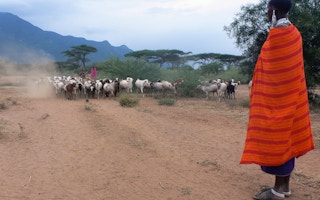Developing countries are better than richer nations at promising to protect important agricultural species in the future, but do less well in safeguarding existing biodiversity.
These were among the findings of the Agrobiodiversity Index, launched this week, which assessed ten pilot countries on how well they care for animals and plants of importance to farming. Agrobiodiversity refers to both domesticated and wild species which contribute to agriculture and food production.
With global hunger rising and at least a third of the world’s population suffering from poor nutrition, diversity in agriculture is essential to improve food security, according to Bioversity International which compiled the index. It says the tool will help decision-makers in government and industry ensure that food systems are more sustainable.
Rising global food demand and limited arable land are pushing us to expand agricultural frontiers and increase production. This often happens without regard to the environment, causing biodiversity loss, and land and water degradation,” the report states.
Researchers from the organisation looked at existing species, their use and protection, as well as plans to nurture these species in the future.
“
The best in terms of status are the lowest in terms of progress. If rich countries don’t improve, they will lose the status they currently hold.
Juan Lucas Restrepo, director general, Bioversity International
The ten countries studied were Australia, China, Ethiopia, India, Italy, Kenya, Nigeria, Peru, South Africa and the United States. Of these, Peru was the second best at protecting existing agricultural biodiversity, with Italy coming first and Australia third. Peru also did well in the progress score, which measures future protection commitments.
Juan Lucas Restrepo, director general of Bioversity International, said that Peru was an amazing case, due to the country’s commitments to working with local communities, promoting sustainable farming and preserving a variety of local crops, such as cocoa, maize, quinoa and oca.
They understand that these crops are not only more nutritious, but they also bring tourists and benefit the Peruvian economy,” said Restrepo. In general, developing countries did less well than their developed counterparts on the current agrobiodiversity status index, with Ethiopia, South Africa and India ranking last. However, on the progress index, which measured future actions and commitments, India led the field, followed by Kenya and South Africa.
These trends could turn developing countries into future “guardians” of agrobiodiversity, said Restrepo, adding: “The best in terms of status are the lowest in terms of progress. If rich countries don’t improve, they will lose the status they currently hold.
According to Restrepo, a growing focus on a few staple crops risks the loss of species variety in farming, making agriculture less adaptable and more vulnerable to economic and environmental shocks.
Researchers found that, while 6,000 plant species are currently being cultivated, fewer than 200 of these make a major contribution to the food chain. Only nine of these, including wheat and rice, make up 66 per cent of global crop production.
The picture looks similar for livestock. Around 7,700 different species of animal are being reared on farms around the world, but of these, more than a quarter face extinction as farmers switch to mass-market produce.
Lukas Egli, a researcher of ecological systems at Germany’s Helmholtz Association, says that better protection of agrobiodiversity will require a “fundamental transformation of the food system, with less focus on intensified farming and more support for small-scale farmers to ensure they can compete.In regions where large-scale industrial agriculture is the norm, policies need to be adapted to give small farmers access to land and support structures to make them economically viable, he told SciDev.Net.
These recommendations, however, go counter to projected trends in agriculture. Increasingly, food is produced by large companies that focus on a few highly popular and versatile crops, such as wheat and corn, to feed an ever-growing global population cheaply.
With climate change fuelling a rise in food prices and the global population expected to hit 9 billion by 2050, Bioversity International says it plans to issue a second index examining the performance of companies in relation to agrobiodiversity, to promote better practices in the private sector.
This article was originally published on SciDev.Net. Read the original article.










